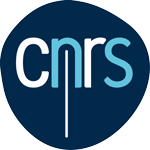Lithospheric imaging from teleseismic full-waveform inversion – Application to the Western Alps
Imagerie lithosphérique par inversion de formes d’ondes télésismiques – Application aux Alpes Occidentales
Résumé
In this thesis, a full-waveform inversion (FWI) algorithm is developed with the aim to image the elastic properties (Vp, Vs and density) of 3D lithospheric models from teleseismic recordings with a spatial resolution of the order of the wavelength. Seismic modeling is performed with a wavefield injection hybrid approach. A first simulation is performed in a global radially symmetric Earth with the AxiSEM code to compute the wavefields on the borders of the lithospheric target. Then, these wavefields are propagated in the target with the spectral finite-element method. After linearization, the inverse problem is solved with a quasi-Newton (1-BFGS) optimization algorithm. The sensitivity of the teleseismic FWI to the experimental setup (subsurface parameterization, initial model, sampling and geometry of the station layout) is first assessed with a realistic synthetic model of the Western Alps. The method is finally applied to nine events of the CIFALPS experiment carried out in the Western Alps, up to a frequency of 0.2Hz. Reliable models of P and S wave speeds and density reveal with an unprecedented resolution the crustal and lithospheric structures of the Alpine Belt, in particular the geometry of the Ivrea body, and the European and Adriatic Mohos. Deeper, two slow velocity anomalies beneath the Western Alps are imaged in the mantle. The first, to the west of the chain, is interpreted as the signature of an asthenospheric upwelling, the second near the location of the Ivrea body indicates the European slab break-off. The study supports the hypothesis of the European continental crust subduction and confirms the possible tearing of the European slab.
Dans cette thèse, un algorithme d'inversion de formes d'ondes (FWI) est développé pour l'imagerie 3D des paramètres élastiques de la lithosphère à partir des enregistrements télésismiques dans le but d'accroître la résolution des images lithosphériques. La modélisation sismique est effectuée par un méthode hybride d'injection de champ d'ondes. Une première modélisation est effectuée dans une Terre globale avec le logiciel AxiSEM pour déterminer les champs d’ondes aux bords de la cible lithosphérique. Ces solutions sont ensuite propagées dans cette cible par une méthode aux éléments finis spectraux. Le problème inverse est résolu avec un algorithme d’optimisation locale de type quasi-Newton (l-BFGS). La sensibilité de la méthode à la configuration expérimentale (paramétrisation du milieu, modèle initial, géométrie et échantillonnage du dispositif de capteurs) est tout d’abord analysée avec un modèle synthétique réaliste des Alpes Occidentales. L’algorithme est finalement appliqué à neuf événements de la campagne CIFALPS dans les Alpes occidentales jusqu’à une fréquence de 0.2Hz. Les modèles de vitesses P et S et de densité révèlent les grandes structures lithosphériques de la chaîne alpine, en particulier le corps d’Ivrée et la géométrie des Moho européen et adriatique. Plus profondément, deux anomalies de vitesses lentes sont imagées dans le manteau et sont interprétées comme la signature d’une remontée asthénosphérique et la localisation du détachement du panneau plongeant européen. Ces résultats corroborent l’hypothèse d’une subduction continentale de la croûte européenne et d’une éventuelle déchirure du panneau plongeant européen lors de la phase de collision.
Origine : Version validée par le jury (STAR)





